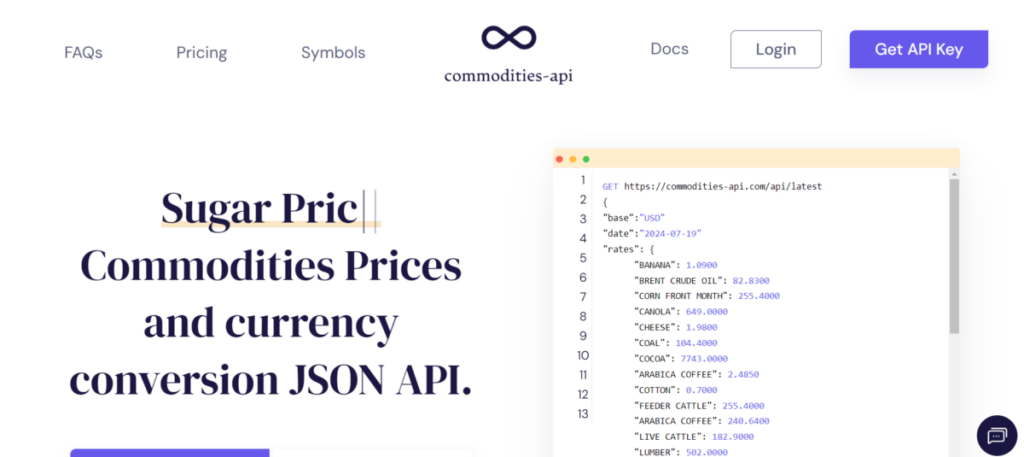As a developer seeking real-time commodity price data, especially for agricultural products like peaches, the Commodities-API is a powerful tool to enhance your applications with reliable, accurate, and up-to-date market information. Among its many features, the Peach Rates API is designed for developers who need accurate peach price data to build market analysis tools, supply chain applications, or any other financial software that tracks commodity prices.
Introduction to Commodities-API
Commodities-API is an API that aggregates commodity price data from reliable sources, including global financial exchanges and trading institutions. It provides real-time price updates, historical data, and customizable API endpoints, making it highly versatile for developers looking to integrate live commodity data into their applications. Whether you’re building software for financial markets, supply chain management, or retail, Commodities-API offers a robust set of tools to keep your data accurate and up to date.
For developers specifically looking for peach prices, the Peach Rates API within Commodities-API is an essential resource. This API provides current peach prices along with historical data, enabling developers to track trends and build insights into price fluctuations over time. Peach pricing data can be used for a variety of applications, such as monitoring agricultural markets, managing inventory for food and beverage industries, or developing financial models for trading.
The Importance of Peach Rates API
Peaches are a significant agricultural product, cultivated extensively in regions such as China, the United States, and Spain. Tracking peach prices in real-time can be crucial for industries ranging from food production to retail. For instance, the U.S. peach market saw fluctuations due to factors like frost damage and labor shortages, which impacted peach supplies and prices. As of 2024, peach prices have been increasing due to lower crop yields and higher demand for canned peaches. The Yuba-Sutter region, a key peach-growing area in California, faced a smaller harvest due to frost, pushing prices higher compared to previous years.
Through the Peach Rates API, developers can access real-time data that reflects these market conditions. This is invaluable for industries dependent on peach supply, such as food processing and retail, where price changes directly impact profitability. By integrating peach price data into their applications, developers can enable businesses to make more informed decisions about procurement, pricing, and inventory management.
Seamless Integration for Developers
The Commodities-API is designed to be developer-friendly, offering seamless integration into various programming environments. The Peach Rates API can be customized to fetch specific data points, whether that’s daily, weekly, or yearly price comparisons. With flexible endpoints and comprehensive documentation, developers can quickly get up and running, embedding live data into their applications. This flexibility allows developers to cater to different user needs, such as real-time tracking for traders or trend analysis for market analysts.
Conclusion
For developers in need of real-time peach pricing data, the Commodities-API and its Peach Rates API offer an exceptional solution. With reliable, up-to-date, and historical data, this API enables you to build robust applications that track commodity prices, analyze market trends, and provide critical insights for businesses. As the peach market continues to fluctuate due to environmental and economic factors, having access to real-time data through Commodities-API ensures that your software stays ahead of the curve. Whether you’re building financial tools or managing supply chains, integrating the Peach Rates API into your applications will provide the accuracy and reliability you need.


